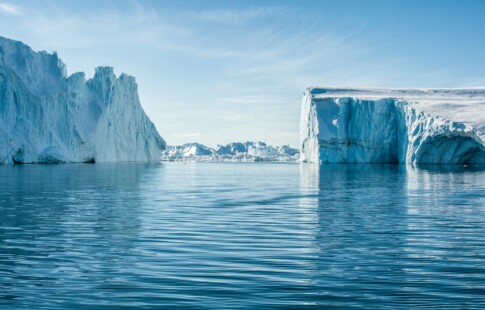
How Do Ocean Currents Affect Weather?
We are reader-supported. When you buy through links on our site, we may earn affiliate commission.
Have you ever sent a glass bottle with a note out into the ocean, hoping it would reach someone far away? You may have noticed that some objects, like sea glass, float right back to shore. However, other objects you never see again – like that beach ball you threw too far last summer. Ocean currents affect weather in a similar way.
The ocean is filled with currents, or streams of moving water. These currents flow in repetitive patterns and distribute temperature and nutrients throughout the ocean. Acting as the earth’s vascular system, this large body of water plays an essential role in climate conditions around the globe.
What Are Ocean Currents?
Along the shoreline, ocean water expands and contracts based on the gravitational pull of the Moon. However, the ocean doesn’t only move by the tides. Many factors combine to create corridors of moving water around the globe.
The ocean is made up of layers of water that move in separate but connected currents. Surface water is affected by the wind and sun – strong wind patterns create flow patterns on the upper layer of the ocean. The warmth of the sun causes water to expand, creating movement on the ocean’s surface.
Farther underwater, deep ocean currents circulate more slowly. These currents are affected by the movement of surface water, but they’re also driven by thermohaline circulation. As cold water contracts, warm water expands and moves downward, creating a vertical exchange of liquid.
Unlike the winds, water currents run into large landmasses that affect their path. Continents and islands deflect ocean currents and contribute to their final shape. When landmasses change along their shorelines, the path of ocean currents can change as well.
How Ocean Water Moves
Although temperature plays a large role in ocean currents, there are other factors as well. For example, the salt content in water can affect how it responds to temperature. Near the earth’s poles, frozen freshwater increases the concentration of salt in the ocean, keeping water cold and causing it to sink. As this salty, cold water sinks, warm water flows into its place.
The rotation of the earth also affects ocean currents. As the earth turns toward the west, ocean currents along the more slowly-moving equator are pulled east. Currents north and south of the equator are pulled west. Finally, currents around the poles move east as well.
The redirection of wind and water by the earth’s rotation is known as the Coriolis Effect. Winds move in a similar pattern, although they’re not identical to ocean currents. The eastern winds along the equator are called the trade winds and west-moving winds are known as the westerlies. The currents by the poles are called the polar easterlies.
Temperature, wind, salinity and the earth’s rotation all affect the direction and speed of ocean currents. However, landmasses are also a huge factor. There are currently five cyclical currents called gyres that circulate between major landmasses. Together, gyres and other currents make up the great ocean conveyor belt, the largest ocean current in the world.
How Ocean Currents Affect Weather
Through all of this motion, ocean currents redistribute temperature and aquatic nutrients around the world. If you look at a map of the globe, you’ll notice that the western shores of most countries tend to have desert climates. By contrast, the eastern shores have high rainfall and more vegetation.
This is actually because of ocean currents. Warm currents coming up from the equator are pulled to the east, where they bring warm water to eastern shores. This warm water easily evaporates, increasing rainfall. More rainfall means lush forests and farmland and fewer droughts.
However, as ocean currents continue to circulate, they pick up cold water from the earth’s poles. By the time these currents hit western shores, they’ve drastically cooled off. Cold ocean water doesn’t evaporate as easily, leading to dry, desert climates along the western side of large landmasses.
In addition to affecting the temperature on land, the speed and location of ocean currents also determine nutrient levels in the water. A healthy interchange between deep and surface currents brings important nutrients up to support aquatic life. These upwellings support around 50% of the fishing industry worldwide.
The Ocean and Earth’s Climate
Ocean currents are similar to the human vascular system. Like blood in the human body, they distribute vital warmth and nutrients around the world. Some scientists are concerned that warming global temperatures are affecting ocean currents by increasing the amount of warm freshwater in the system.
So, what are some examples of how ocean currents affect weather? Warmer currents may increase the number of severe thunderstorms along eastern shores. More rain could mean more flooding and drastic temperature changes affecting the open ocean may increase the size and force of hurricanes. Meanwhile, on the molecular level, an increase in greenhouse gases is affecting the acidity of the ocean.
Phytoplankton in the water trap more carbon dioxide than all the forests in the world combined. Oceans are the lungs of the earth, creating oxygen that sustains both aquatic and terrestrial life. Any reduction of phytoplankton or increase in carbon dioxide puts pressure on this system, affecting life around the globe.
Ocean currents and climate change have a reciprocal relationship. When the earth’s temperatures get warmer, the ocean is affected. However, changes in ocean currents can also impact the climate, changing temperature and rain patterns and affecting millions of people around the world. Caring for the ocean is integral to caring for the planet.
Healthy Oceans Are Essential
Through circulating currents, the ocean distributes temperature and aquatic nutrients around the world. The movement of ocean water is affected by a combination of temperature changes, salinity, wind patterns and the earth’s rotation. When currents meet continents, they affect weather and climate.
As greenhouse gases warm the atmosphere, the ocean warms too. Changes in carbon dioxide levels and temperature affect the health and stability of the ocean. Any change to the temperature of the ocean affects currents and life on land. Keeping oceans healthy is an essential part of environmentalism.
Share on
Like what you read? Join other Environment.co readers!
Get the latest updates on our planet by subscribing to the Environment.co newsletter!
About the author
Jane Marsh
Starting from an early age, Jane Marsh loved all animals and became a budding environmentalist. Now, Jane works as the Editor-in-Chief of Environment.co where she covers topics related to climate policy, renewable energy, the food industry, and more.





